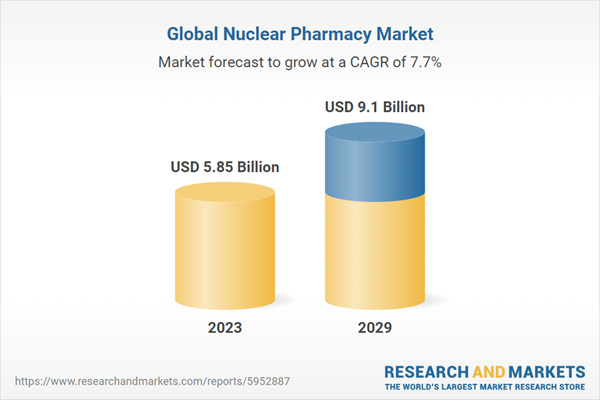Institutional is the fastest growing segment, North America is the largest regional market
Speak directly to the analyst to clarify any post sales queries you may have.
10% Free customizationThis report comes with 10% free customization, enabling you to add data that meets your specific business needs.
Key Market Drivers
The global nuclear pharmacy market is significantly influenced by two major driving factors: the rising burden of chronic diseases and continuous advancements in radiopharmaceutical development. The increasing global burden of chronic diseases represents a primary impetus for the nuclear pharmacy market, necessitating sophisticated diagnostic and therapeutic interventions. Conditions like cancer, cardiovascular disorders, and neurodegenerative diseases exhibit growing prevalence worldwide, driving escalating demand for early, accurate detection and targeted treatment. Nuclear medicine, offering functional and molecular imaging, proves crucial in disease staging, treatment monitoring, and personalized therapy selection.Key Market Challenges
A significant challenge impeding the Global Nuclear Pharmacy Market's growth is the persistent supply chain disruptions and shortages of critical radioisotopes. The inherently short half-lives of these materials, such as Technetium-99m, necessitate complex and highly efficient logistics, making the supply chain exceptionally vulnerable to any interruption in production or distribution. This reliance on a limited number of aging nuclear reactors for isotope generation, coupled with unpredictable maintenance schedules or unexpected outages, frequently leads to insufficient supply.Key Market Trends
The emergence of targeted alpha therapies significantly influences the global nuclear pharmacy market by introducing a potent and precise cancer treatment modality. These therapies deliver highly localized radiation using alpha-emitting isotopes, effectively targeting malignant cells with minimal damage to healthy tissues, thus expanding therapeutic options. In January 2025, a Society of Nuclear Medicine and Molecular Imaging (SNMMI) strategy meeting indicated two-thirds of physicians anticipated over 10% growth in therapy at their facilities within the year. This is reinforced by Sanofi's AlphaMedix (Lead-212-DOTAMTATE) receiving FDA Breakthrough Therapy Designation in February 2024, followed by positive Phase 2 results for gastroenteropancreatic neuroendocrine tumors in October 2025.Key Market Players Profiled:
- Jubilant Radiopharma (Jubilant Pharma Holdings Inc.)
- GE HealthCare Technologies, Inc.
- Cardinal Health, Inc.
- ARTMS Inc.
- AnazaoHealth Corp.
- Sofie Biosciences, Inc.
- Pacific Radiopharmacy, Ltd.
- NTP Radioisotopes SOC Ltd.
- Lantheus Medical Imaging, Inc.
- ANSTO Nuclear Medicine Pty Ltd.
Report Scope:
In this report, the Global Nuclear Pharmacy Market has been segmented into the following categories:By Type:
- Institutional
- Commercial
By Purpose:
- Diagnostic
- Therapeutic
By Region:
- North America
- Europe
- Asia-Pacific
- South America
- Middle East & Africa
Competitive Landscape
Company Profiles: Detailed analysis of the major companies present in the Global Nuclear Pharmacy Market.Available Customizations:
With the given market data, the publisher offers customizations according to a company's specific needs. The following customization options are available for the report.Company Information
- Detailed analysis and profiling of additional market players (up to five).
This product will be delivered within 1-3 business days.
Table of Contents
Companies Mentioned
The companies profiled in this Nuclear Pharmacy market report include:- Jubilant Radiopharma (Jubilant Pharma Holdings Inc.)
- GE HealthCare Technologies, Inc.
- Cardinal Health, Inc.
- ARTMS Inc.
- AnazaoHealth Corp.
- Sofie Biosciences, Inc.
- Pacific Radiopharmacy, Ltd.
- NTP Radioisotopes SOC Ltd.
- Lantheus Medical Imaging, Inc.
- ANSTO Nuclear Medicine Pty Ltd.
Table Information
| Report Attribute | Details |
|---|---|
| No. of Pages | 185 |
| Published | November 2025 |
| Forecast Period | 2024 - 2030 |
| Estimated Market Value ( USD | $ 5.99 Billion |
| Forecasted Market Value ( USD | $ 9.46 Billion |
| Compound Annual Growth Rate | 7.9% |
| Regions Covered | Global |
| No. of Companies Mentioned | 11 |









